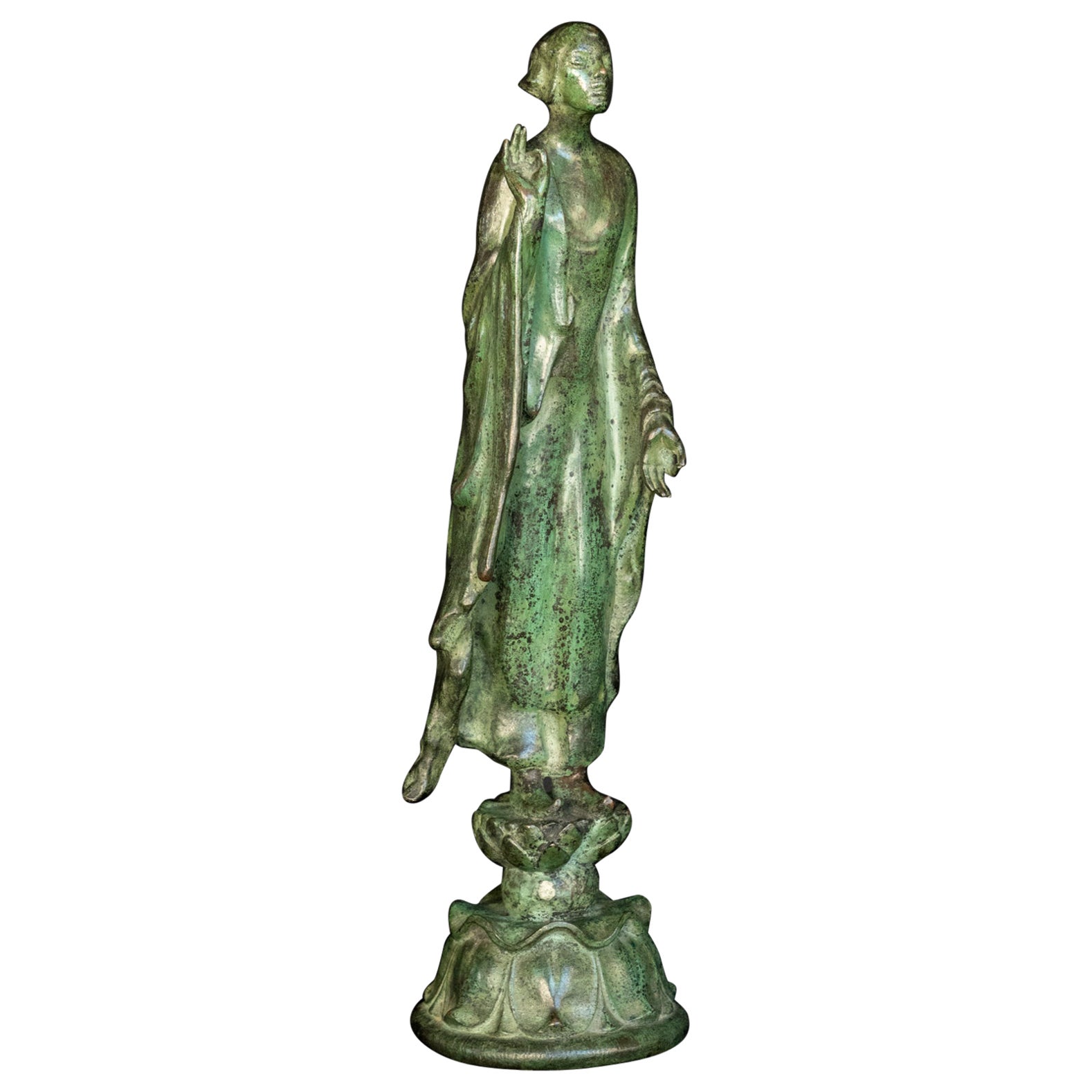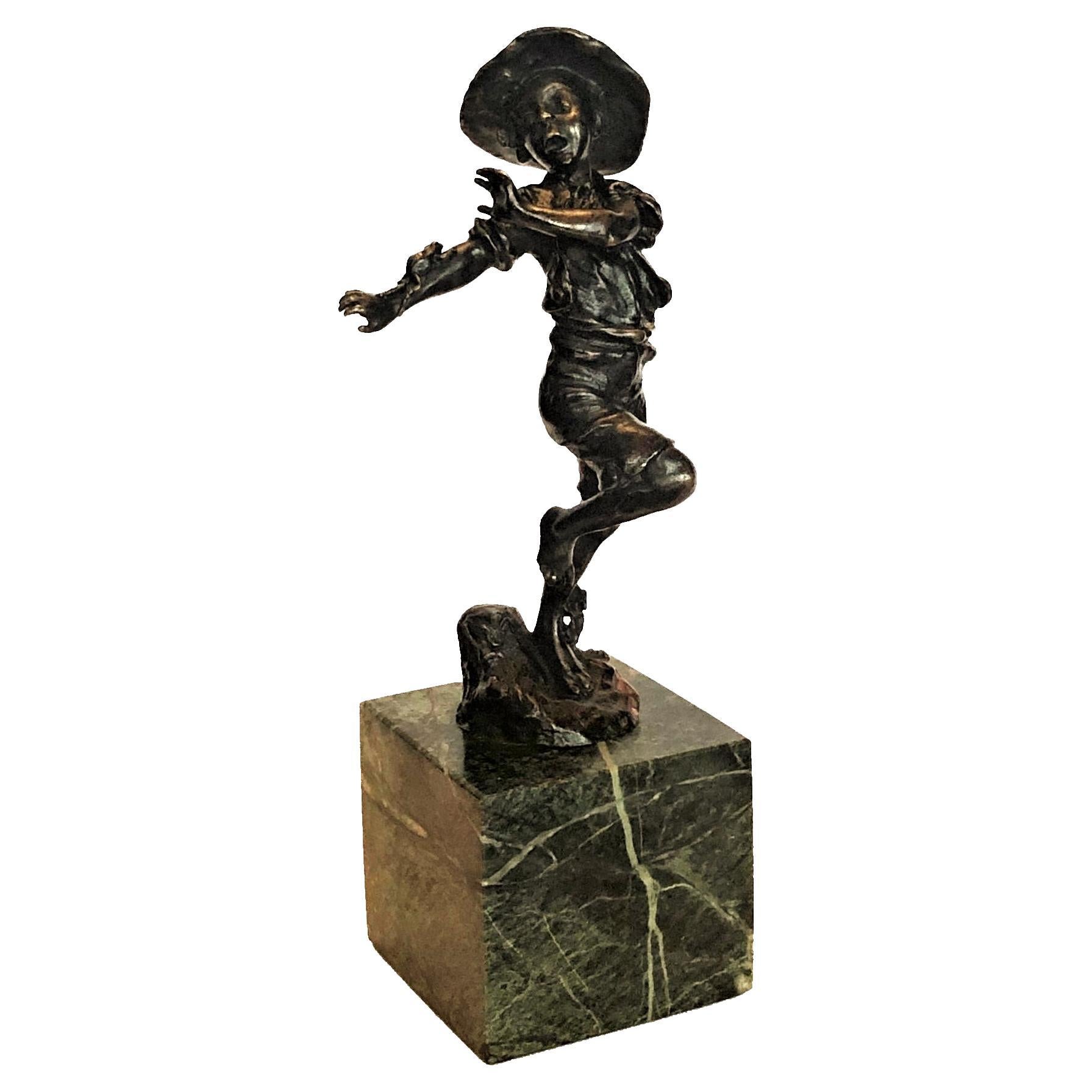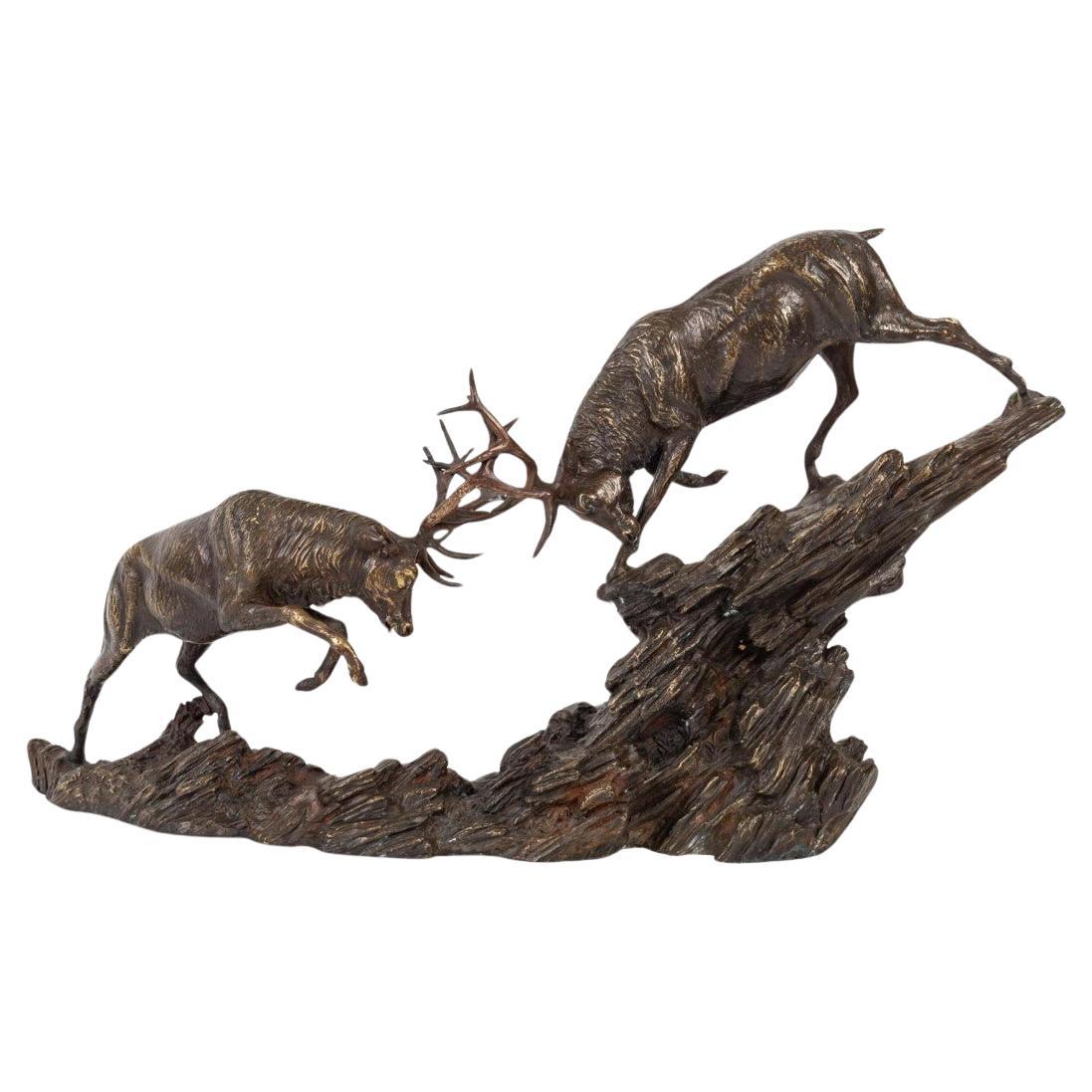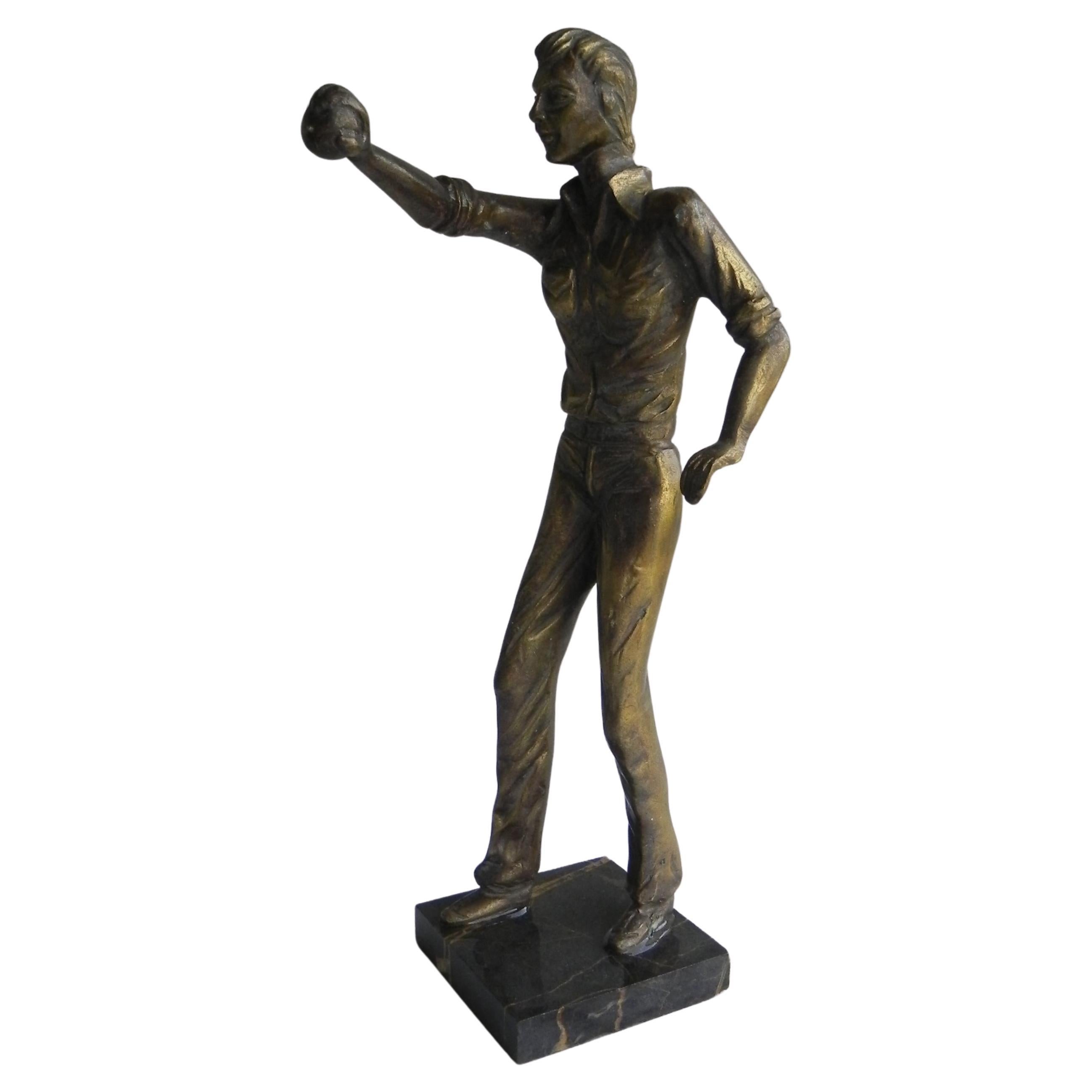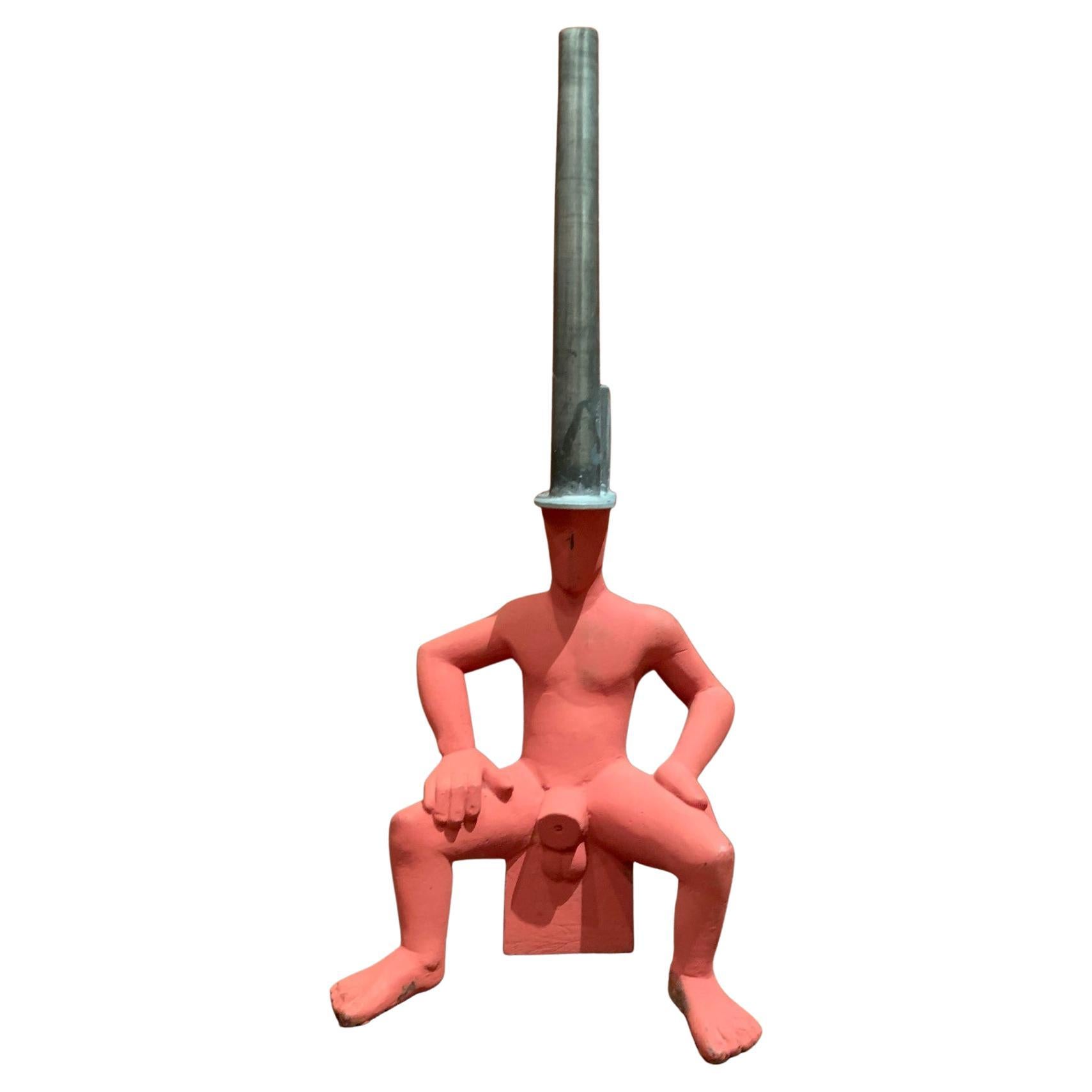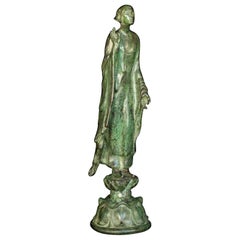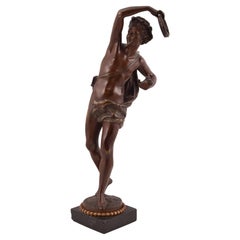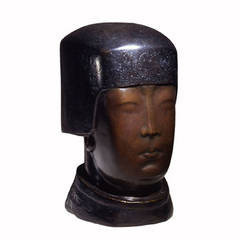
Léon Indenbaum, Portrait de Foujita, Bronze, 1915
View Similar Items
1 of 1
Léon Indenbaum, Portrait de Foujita, Bronze, 1915
About the Item
- Creator:Léon Indenbaum (Artist)
- Dimensions:Height: 13.78 in (35 cm)Width: 7.29 in (18.5 cm)Depth: 9.65 in (24.5 cm)
- Materials and Techniques:Bronze,Patinated
- Place of Origin:
- Period:1910-1919
- Date of Manufacture:1915
- Condition:
- Seller Location:Paris, FR
- Reference Number:1stDibs: LU104922692892
You May Also Like
- Gertrude Vanderbilt Whitney Bronze Sculpture "Chinoise" circa 1915By Gertrude Vanderbilt WhitneyLocated in San Francisco, CAGertrude Vanderbilt Whitney Bronze Sculpture "Chinoise" circa 1915. A standing figure of a woman in a flowing gown with Buddha-like hand gestures standing on a lotus form base. Ma...Category
Early 20th Century American Art Nouveau Figurative Sculptures
MaterialsBronze
- Bronze sculpture “Harmony”. RANCOULET, Ernest (France, 1870-1915).By RancouletLocated in Madrid, ESBronze sculpture “Harmony”. RANCOULET, Ernest (France, 1870-1915). It has small flaws. On a square base, there is a circular shape with a string of pearls and a rocky finish at the...Category
Antique Late 19th Century French Neoclassical Revival Figurative Sculptures
MaterialsBronze, Other
- Prince Paolo Troubetzkoy, Bust of a Boy, Impressionist Bronze Sculpture, 1915By Prince Paul TroubetzkoyLocated in New York, NYSigned & dated ‘Paul Troubetskoy ‘15’. Original dark-brown patina. Roman Bronze Works foundry stamp. Dimensions: Height: 12.5 inches (31.25cm) Width: 11.5 inches (28.75cm) Depth: 9 inches Prince Paolo...Category
Vintage 1910s Italian Expressionist Busts
MaterialsBronze
- German Bronze Figure of a Miner, Early Moderne Look, ca 1915Located in Petaluma, CAThis bronze figure of a miner with his tools is not your standard fare. Check out that masculine, almost square face. It has that look of a WPA worker, only this bronze is much earl...Category
Vintage 1920s German Modern Figurative Sculptures
MaterialsMarble, Bronze
- Ad Lumen Bronze Sculpture After Emile Louis Picault (1833-1915)By Émile Louis PicaultLocated in New York, NYFinely cast and patinated bronze statue after Emile Louis Picault (French, 1833-1915) known as Ad Lumen (To the Light), measuring 41 1/2 inches tall.Category
Antique Late 19th Century French Neoclassical Revival Figurative Sculptures
MaterialsBronze
- Frank Vittor Italian/American Sculptor Mother and Child Bronze, 1915By Frank VittorLocated in Phoenix, AZFrank Vittor (1888-1966) important bronze of mother and child. Signed by the artist “F. Vittor” and dated 1915. Also bears the foundry mark. Measures 12 1/2"h x 12 ½”w x 9"long. Bronze rests on a 1 ½ inch marble plinth. Artist born in Italy, studied with Rodin. The foundry is the National Art bronze works. The bronze was converted to a lamp at one point, and still bears a threaded tube projecting from the lower base approximately ½ inch. Frank Vittor (January, 6, 1888 - January 24, 1968) was an Italian immigrant to the United States who became famous as a sculptor. Vittor was born in Mozzato, Como, a suburb of Milan, Italy. He studied art in Milan at the Academy of Beres and then traveled to Paris, France to study under Auguste Rodin. When Vittor was 18, in 1906, U.S. architect Stanford White brought Vittor to New York to work on his staff. White, who had designed Madison Square Garden II, was murdered at a performance at The Garden two weeks after Vittor arrived. The youth, having little money and knowing very limited English, decided to stay in America and soon opened an art studio. He met his future wife, Ade Mae Humphreys, a resident of Pittsburgh, and made the move to her home town. Aviator Charles Lindbergh's first solo trans-Atlantic 3,600-mile (5,800 km) flight between Long Island, New York and Paris, France was immortalized in bronze by Vittor with a 50-foot-tall (15 m) sculpture showing a winged youth spanning the Statue of Liberty and the Eiffel Tower. Congress approved the expenditure in 1928, and the work was completed in 1929. Perhaps no work by Vittor created as much controversy and media coverage as did his nude statue of Henrietta Leaver, Miss America 1935. Though Leaver posed for Vittor, she did so in a bathing suit, accompanied by her grandmother. Upon first viewing the life-size 5-foot 5-inch plaster statue Leaver was shocked that it was a nude and demanded her representation be draped or veiled. Vittor did not agree and called in art experts to judge the work and all agreed it should stay as it had been created. Leaver did not back down and demanded people her own age review The American Venus, as it had originally been called. Unfortunately for Leaver her 60 peers, many of whom were art students, agreed it should remain unveiled. Though the strong disagreement between the two eventually did subside, Leaver, Vittor and the statue resurfaced five decades later in recaps of controversial Miss America mishaps. Baseball player Honus Wagner, one of the first five players inducted into the Hall of Fame, was memorialized by Vittor in a 17-foot-tall (5.2 m) bronze statue, originally on display near the Pittsburgh Pirates Forbes Field. It was moved to Three Rivers Stadium and, when that stadium was imploded in 1971, the statue was relocated to PNC Park.[6] In 1958, one of Vittor's greatest works, a 50-foot-tall (15 m) granite base and bronze statue of Christopher Columbus, was unveiled in Pittsburgh's Schenley Park. Shortly after the statue was placed, the bronze plaque at the base was stolen by vandals. The Sons of Columbus USA desire to replace the plaque with the original wording; however, there exists no record of what Vittor had written regarding Columbus. Charles Lindbergh was the recipient of a second work of art created by Vittor. The artist and sculptor designed a commemorative stamp picturing the pilot and his plane, the Spirit of St. Louis. Walter F. Brown, the U.S. Postmaster General, authorized a 175th anniversary commemorative "Battle of Braddock" 2-cent stamp to be designed by Vittor. The artwork he created featured a likeness of Colonel George Washington with the inscription "Battle of Braddock's Field, 1755-1930. In 1936 the U.S. Congress authorized minting a half-dollar coin to commemorate the 75th anniversary of the American Civil War. Vittor was the person selected to design the coin. The obverse depicts the profile of two soldiers, one from the North and one from the South and the reverse holds a symbol of the battle placed between the combatant's shields. The coins were distributed through the Pennsylvania State Commission for Gettysburg. Throughout Pittsburgh and the surrounding communities there exist more than 50 statues...Category
Early 20th Century Figurative Sculptures
MaterialsBronze
Recently Viewed
View AllMore Ways To Browse
Atelier Du Monde
Teppanom Statue
Venus Au Bain
Wilhelm Schmid
African Tribal Masks And Busts
Antique Indian Wooden Musician
Barrister Wig Stand
Blanca Bonn
Bob Fowler On Sale
Bronze Colored Sculpture Of Seated Couple
Buck Mccain Bronze
David Fisher Lucite Stargazer
Dr Licky
Droog Desk
Fender Jaguar
Germany Heubach Dolls
Gio Ponti Horned Mask
Greek Hermes Shoe
